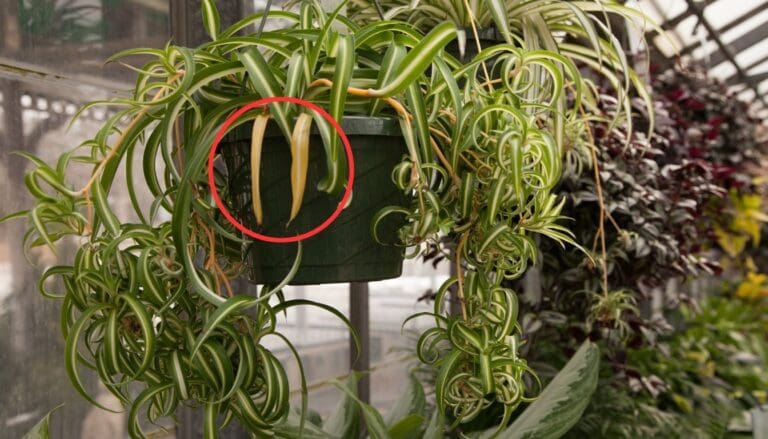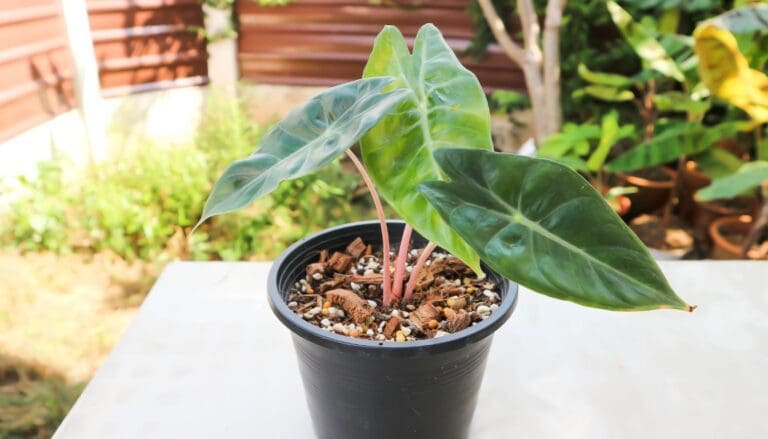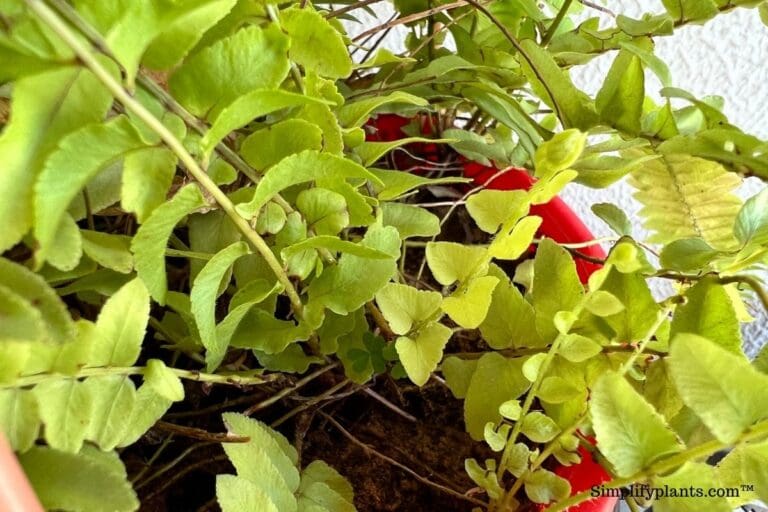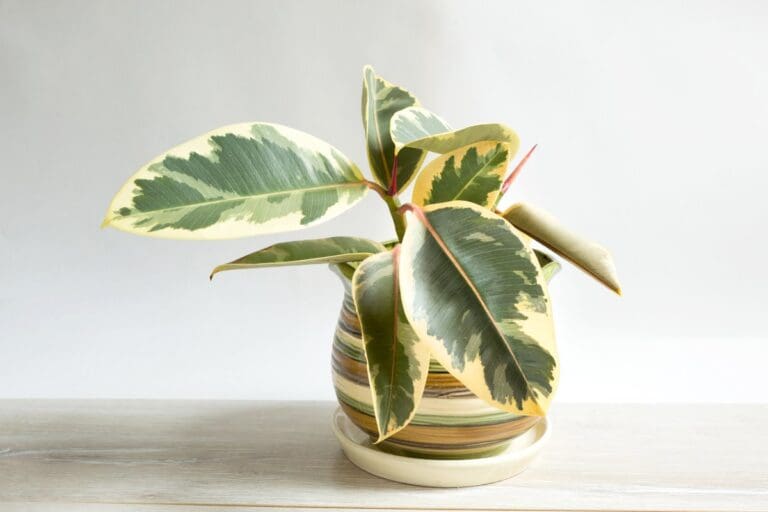Snake Plant Light Requirements: Direct Sun, Low Light Or Bright Indirect Light?
Snake plants are very versatile and hardy plants that can grow in almost all types of light. Whether it’s low light or bright light spot, snake plants are always a go-to recommendation. But how much light does a snake plant need? What is the ideal condition for your snake plant? Let’s find out!
Snake plants can grow in a wide range of lighting conditions. They can grow in low light as well as bright indirect light. However, the growth of the snake plant will vary depending upon the light they receive. Under low lighting conditions, the snake plant grows slow, whereas they thrive well under bright indirect light.
The snake plant is often recommended for low lighting conditions. But are there any tradeoffs of growing then under low lighting instead of a bright indirect light?
In this article, we shall discuss all about ideal lighting conditions for your snake plant and what you can expect from your snake plant under different lighting conditions.

Please note: Simplify Plants is reader-supported. Some links in the post are affiliate links and I get a commission from purchases made through links in the post.
Importance of light for snake plant
Light is the source of energy for all living beings, including plants. Plants were never supposed to be grown inside our homes. They belong to nature outside, where they have access to all the resources they need.
However, even if we justify it by saying we are bringing a part of nature into our homes, it doesn’t really change the plants’ needs and requirements.
Plants need sunlight to produce food. They use sunlight along with carbon dioxide and water to produce sugar and oxygen. The sugar acts as a source of energy for the plants.
Without adequate lighting conditions, the process of photosynthesis may not be efficient. Thus, it will result in stunted growth and other problems in our snake plants.
What type of light does a snake plant need?
Snake plants originate from an arid environment where they don’t receive much water and humidity. Thus, they have thick fleshy leaves that can store water for an extended period.
Although the snake plant has a sturdy leaf, they cannot tolerate direct sunlight. Too much sun can burn the leaves of your snake plant.
Simultaneously, low light can also lead to slow growth and some other problems in your snake plants.
If some snake plant leaves are droopy, then it probably indicates your plant is not receiving enough sunlight. Moving your plant to a brightly lit spot can make them thriving again.

Direct light vs. Indirect Light
Differentiating between the type of light is crucial for the growth of your snake plant. Both too much and low lighting conditions are bad for the growth of your snake plant.
There are generally two types of light. One is direct sunlight, and the other one is indirect lighting. If you are a total beginner, then let me throw you with a brief differentiation between the two of them.
When the light received by the plant is unfiltered and direct, then it is called direct sunlight. Such light forms a clear and distinct shadow that can easily be identified.
However, if your plant is placed at a spot where direct sunlight doesn’t fall on its foliage, then it can be called indirect sunlight.
Light filtered through a sheer curtain, refected through walls and floors are all indirect light.
I hope that clears your doubt regarding the different types of lighting conditions.
Now, what we need for our snake plant is bright indirect sunlight. With that in mind, move towards determining the best placement for your snake plant.
Can snake plant survive without sunlight?
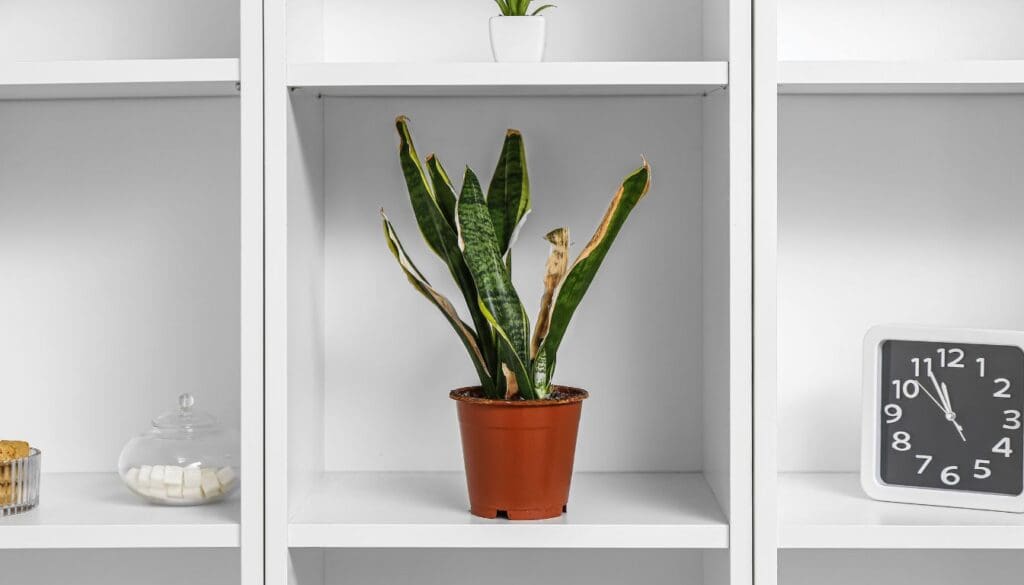
Snake plants can do fairly well, even in low-medium lighting conditions. Direct bright sunlight can burn the foliage of your snake plant. Thus, they don’t need any direct sunlight to survive.
However, snake plants do need light for photosynthesis. So, you need to provide them with bright indirect sunlight to thrive.
Your snake plant is going to do exceptionally well in a well-lit space. But even in low lighting conditions, they are likely to survive provided their other cultural conditions are met.
Best spot for snake plant
The snake plant is very sturdy, which gives us the versatility of keeping them at almost every spot.
Right from the window sill of your shower to a cornered office desk, be it your living room or your bedroom, your snake plant will do well provided other cultural conditions are right for them.
It doesn’t make a huge difference whether the spot you choose is near the window or far away from it. As long as the plant gets some hours of natural lighting, they should survive.
However, that doesn’t mean your snake plant will grow equally under different lighting conditions. The growth is going to vary depending upon the lighting and other care provided.
Any spot that is 4-6 feet away from the window shall do exceptionally well for your snake plant. Avoid placing them at the window sill where they can get caught by the afternoon sun as those fleshy leaves can get scorched under bright direct sunlight.
Also read: How To Make House Plants Grow Faster? (Crucial Factors+9 Secret Tips)
Is my snake plant getting enough light?

The Snake plant can survive even in low lighting conditions. However, don’t expect too much growth from them under such circumstances.
If your snake plant is not receiving enough light, then they will give you some visual signs. Understanding these cues is crucial to fix the issue and keep your snake plant thriving. Some common signs include:
- Wet soil
- Slow growth
- Droopy leaves
- Root rot
- Soggy leaves
When your snake plant doesn’t receive enough sunlight, it will start storing energy for survival. As a result, the growth of your plant will be affected.
The first sign of not enough lighting is droopy leaves. Mostly the lower leaves will start drooping first.
If you see any of these signs, you must move them to a brightly lit spot for a few weeks. Your snake plant will soak in enough light to proliferate again.
Is my snake plant getting too much sun

Snake plants do well under brightly light conditions, but that doesn’t mean too much sunlight is right for them. If your snake plant gets too much light, then you will notice some of the following signs:
- Yellow or brown leaves
- Leaves start drooping
- Dry and cracky soil
- Scorched leaf
If you notice any of these signs, you need to move them to another spot or use some filters like sheer curtains or blinds.
Often people think that watering inadequately is the cause above problems, but that is not always true. Sometimes too much light can also lead to specific problems in your snake plant.
It would be ideal to clip the yellow and dying leaves so that it can stimulate the growth hormone of your snake plant. This way, the plant can focus more on healthy foliage and new growth.
Can snake plants grow in low light?
Snake plants can grow in low lighting conditions, but the growth of your plant will be slower.
A superb trick that I use to keep a snake plant at my office desk that receives very low light is I keep rotating my plants.
For example: If I keep my snake plant at my desk for 20-25 days, then for a period of one-two weeks, I move this snake plant to my living room and get the plant from that room at my desk.
I keep rotating them as per the need of my plant. You can even rotate between another similar size plant. This way, your snake plant is likely to do well even when lighting conditions are not ideal.
What if my room has no windows?
Growing any houseplant with no natural light is merely impossible for a beginner. Yes, there will be some people who are successful with it, but it would only be possible when you find a way to supplement the light either naturally or artificially.
Does that mean the snake plant will give up on you if there are no windows in your room? No, you can still grow them. What I would recommend is getting a grow light for them.
I personally love these amazing SANSI 15W LED Grow Light Bulb, which I got from amazon. These are standard E-26 base bulbs which can be fitted in any standard household lamp and holders. I use it with my table lamp and let my snake plant sit under the light for 6-8 hours daily.
If I notice that my plant is not doing well, I will occasionally rotate it with other plants to get their fair share of natural light.
Where there is hope, there is a way, and these fantastic bulbs changed my perspective towards growing plants under low lighting conditions.
How many hours of sunlight do snake plants need?
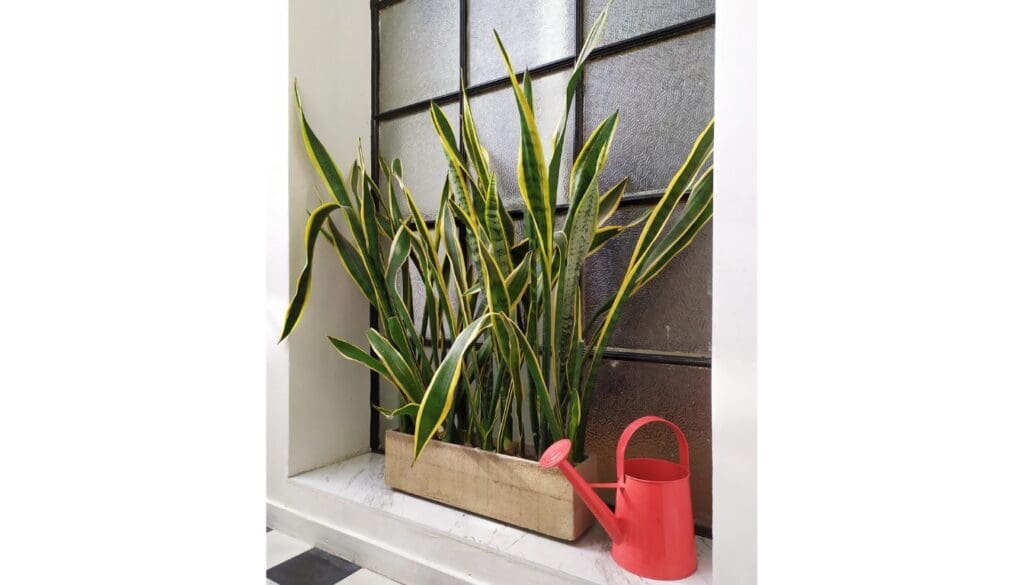
Snake plants prefer at least 8-10 hours of bright lighting daily. The more, the merrier it is for your snake plant. These plants can adjust to various lighting conditions and intensity.
Thus, you can place them at a spot that receives little less light, and they will likely surprise you with profound growth.
Final Thoughts

Snake plants are sturdy and versatile. They are very forgiving and really hard to exterminate. But the two crucial factor needs to be set right and, i.e., lighting and watering.
Even if you don’t have the right temperature or humidity or rich soil, your snake plant will still thrive, provided you provide them with adequate water and light.
When it comes to lighting for your snake plant, both too much and too little is bad for them. While too much light is likely to burn their leaves, too little will result in droopy leaves and slow growth. Thus, finding the right balance is crucial for a thriving plant.
I hope I have answered all your doubts regarding the lighting requirements regarding the snake plant. Feel free to share this article with fellow hobbyists if you find it helpful.
Source: The University of Arkansas Division of Agriculture, University of Minnesota, Snake plant profile, Lighting Indoor Houseplants.
Recommended Garden Supplies
| Product Image | Our Recommended Gardening Supplies | Check Offers! |
|---|---|---|
Top Top
Top
Top
Top
Top
Top
Top
Top | rePotme Houseplant and Tropical Classic Potting Soil Mix | Check Offer On Amazon |
 Top
Top
Top
Top
Top
Top
Top
Top | Espoma Organic Indoor Plant Food | Check Offer On Amazon |
 Top
Top
Top
Top
Top
Top
Top
Top | GooingTop LED Grow Light 6000K Full Spectrum Clip Plant Growing Lamp | Check Offer On Amazon |
 Top
Top
Top
Top
Top
Top
Top
Top | Soil Moisture Meter | Check Offer On Amazon |
 Top
Top
Top
Top
Top
Top
Top
Top | Govee Hygrometer Thermometer, Bluetooth Enabled! | Check Offer On Amazon |
 Top
Top | LEVOIT Humidifiers for Large Room(Best For Plants) | Check Offer On Amazon |
 Top
Top
Top
Top
Top
Top
Top
Top | Upgraded DIY Automatic Drip Irrigation Kit, 15 Potted Houseplants Support | Check Offer On Amazon |
 Top
Top
Top
Top
Top
Top
Top
Top | Stainless Steel Heavy Duty Gardening Tool Set | Check Offer On Amazon |
 Top
Top
Top
Top
Top
Top
Top
Top | Bonide Insecticidal Soap | Check Offer On Amazon |
 Top
Top
Top
Top
Top
Top
Top
Top | Bonide 32 oz Spray Neem Oil for Organic Gardening | Check Offer On Amazon |
 Top
Top
Top
Top
Top
Top
Top
Top | Garden Safe Fungicide | Check Offer On Amazon |



